Assassin’s Creed IV: Black Flag Review: Is it Worth Playing Now?
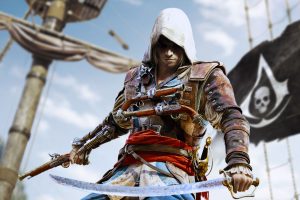
Assassin’s Creed 4: Black Flag has always been heralded as one of better entries into the commercially huge but critically mixed AC series.
Touted as an open-world pirate simulator with some of the series’ tropes thrown in, it appealed to me, so I thought I’d play the current-gen remaster to see what I thought.
You take control of Edward Kenway, a lovable rogue privateer seeking his fortune, who gets caught up in a sprawling adventure across the West Indies, filled with Assassins, Templars and pirates.
The Good
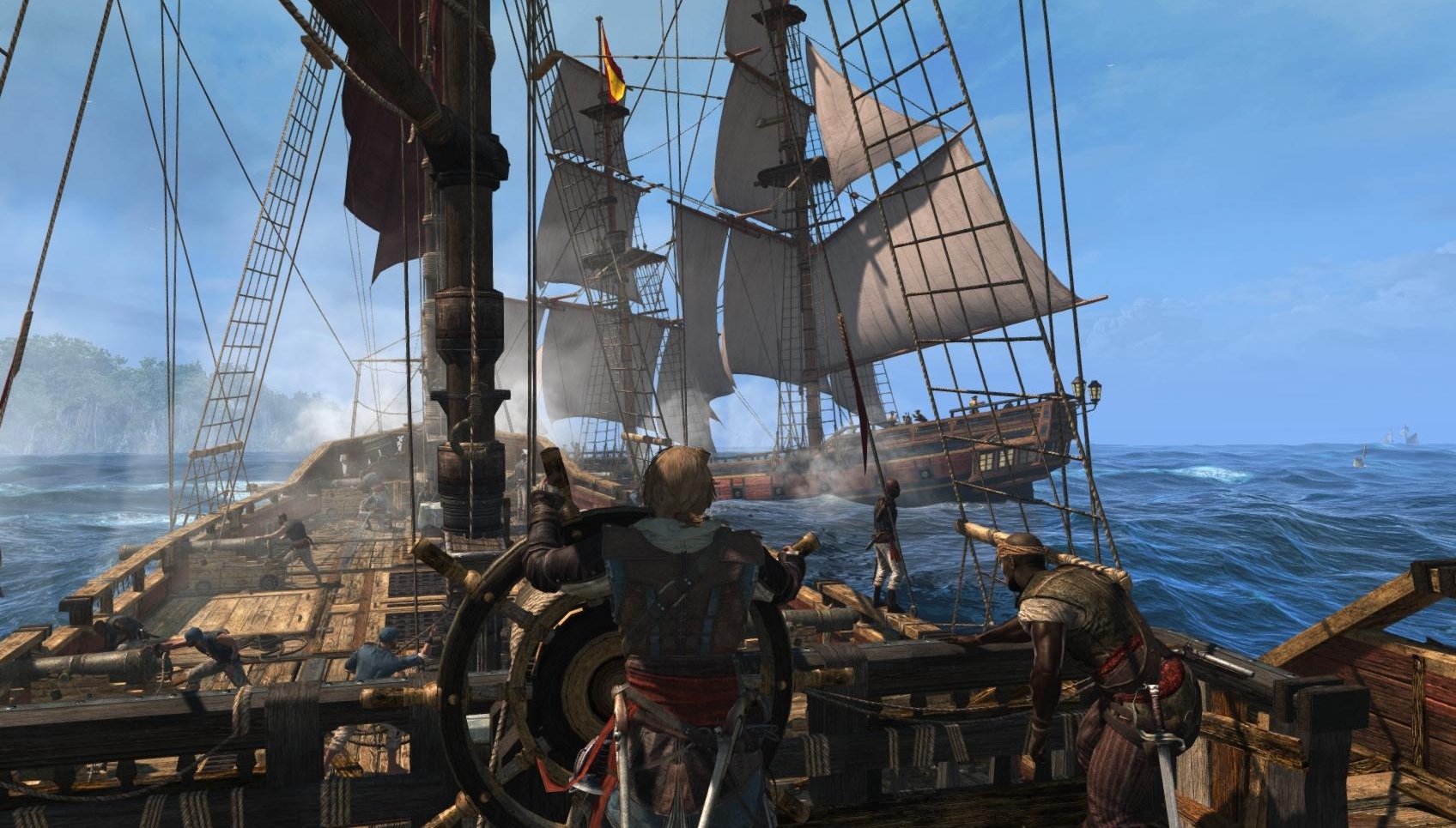
Open World: The world map of the West Indies opens up quickly to the player in Black Flag, and you can see why the developers wanted to get the player out there, as the Caribbean islands are rendered beautifully.
The lush jungle islets are punctuated with urban areas including Havana, Nassau and Kingston, each with their own distinct aesthetic and feel. The open sea is a joy to sail across and has a life of its own, with random storms, rogue waves and varying degrees of choppiness all serving to keep things interesting as you sail around. Its size is large enough to feel open and expansive, but also not too huge to make travelling feel a chore or padded out. The sea is always busy with enemy ships, large fish to harpoon, loot to plunder and mini islands to explore. It’s a very well-crafted world.
Seamless: Something that can really break immersion in an open-world game is loading screens and breaks between various areas. I went into Black Flag half expecting the on-foot segments and the ship-sailing sections to be separated by something like this, but to my pleasant surprise the transition is seamless.
There’s real satisfaction derived from spotting an island, sailing up to it and hopping off your ship to explore, then jumping back aboard your ship and sailing away. Some of the most impressive parts of the game came from this sequence, and seeing your customised ship waiting for you in the background as you hunt for treasure amounts to paint the perfect pirate-y picture.
Ship battles: The ship-to-ship combat in this game really is the highlight of the whole experience, and Ubisoft deserve a lot of credit for how they’ve handled what is a complicated and potentially cumbersome mechanic.
Each encounter goes something like this: spot a ship; use your spyglass to see what loot lies aboard; if you like the loot, engage and attack; use your mortars, broadside cannons, chain cannon balls and fire barrels to whittle down the health of the ship; when it’s on its last legs, you’re given the option to board, and your crew will throw grappling hooks over and pull you towards it; grab a hand-cannon and fire shots in, or just jump right over; you’re then given an objective that will vary depending on the size and type of the ship, most of the time entails killing 5/10/15 enemies or destroying the ship’s flag or fuel reserves; once you succeed, you can then either repair your ship, lower the ‘wanted level’ (a la GTA stars) or capture the ship and send it to your fleet (more on that shortly).
Again, the whole mechanic is seamless and is so well crafted from beginning to end, it genuinely never gets old. When several ships are involved sometimes attacking each other as well as you, things get really intense.
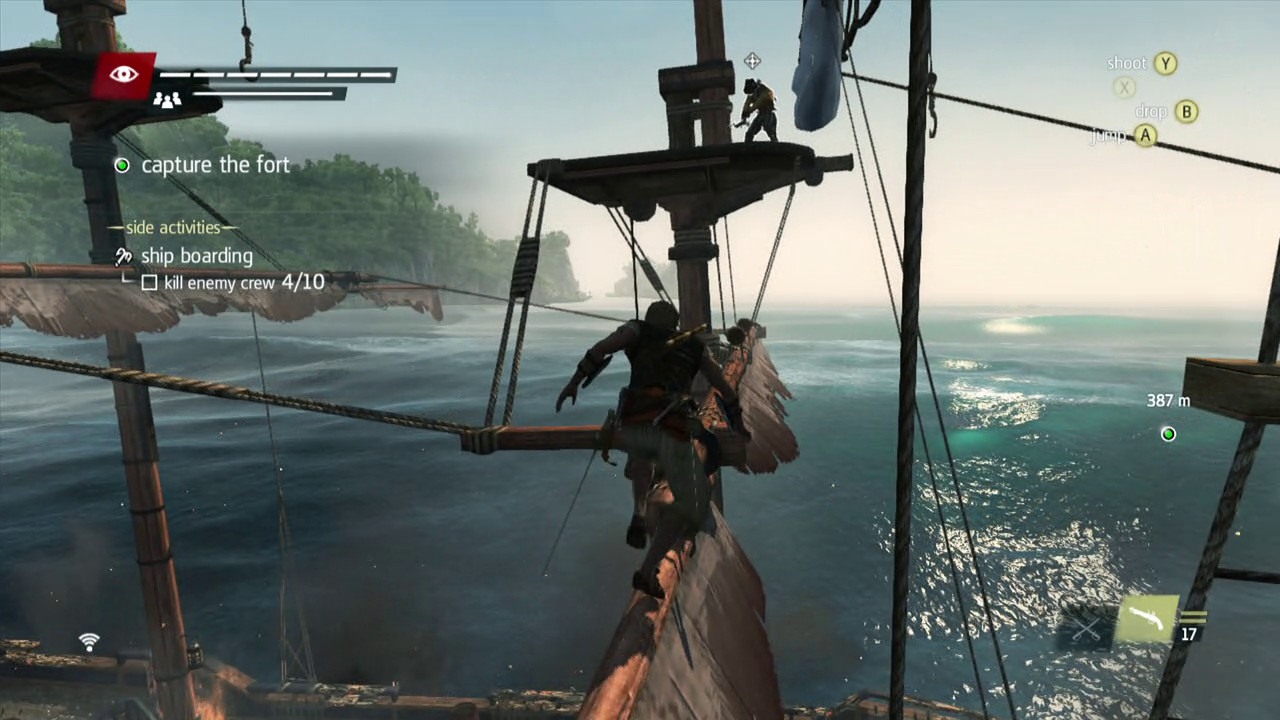
Scaling a ship: Whilst we’re on the ships, they really are beautifully rendered in this game. Not many of the urban areas have too many tall scale-able buildings that the AC free-climbing movement requires to flex its muscles, but the ships themselves more than make up for it. Clambering up rigging of an enemy ship whilst your crew fights their crew below is a hell of a spectacle, and jumping from ship-to-ship really shows off the benefits of the free-climb mechanics.
Upgrades: The game allows you to purchase upgrades for your ship, both cosmetically and in the stats department. The options are plentiful, and it can be quite a challenge gathering the right amount of resources required for the upgrades, so you wont find yourself wielding a super-powerful ship early doors. There’s enough depth in the upgrade system to keep you thinking about it throughout the whole game, and the requirement for resources as well as money incentivises you to keep plundering ships.
Shanties: Whilst sailing around, if not in combat your crew will sing shanties, which can be collected throughout the world. They’re all great, and will stick in your head for days.
Attacking forts: Along with enemy ships, there are several forts that are dotted around the map that you can attack and take command of. Again, the seamless nature of the experience is where the fun lies – destroy the guns with your ship, sail up to the dock and proceed on foot to kill the fort’s officers, and the fort is yours! Any ship that sails close to your newly-obtained fort then gets attacked by it automatically. Each fort is unique and has its own set of treasures to find too, so again the experience doesn’t get old.
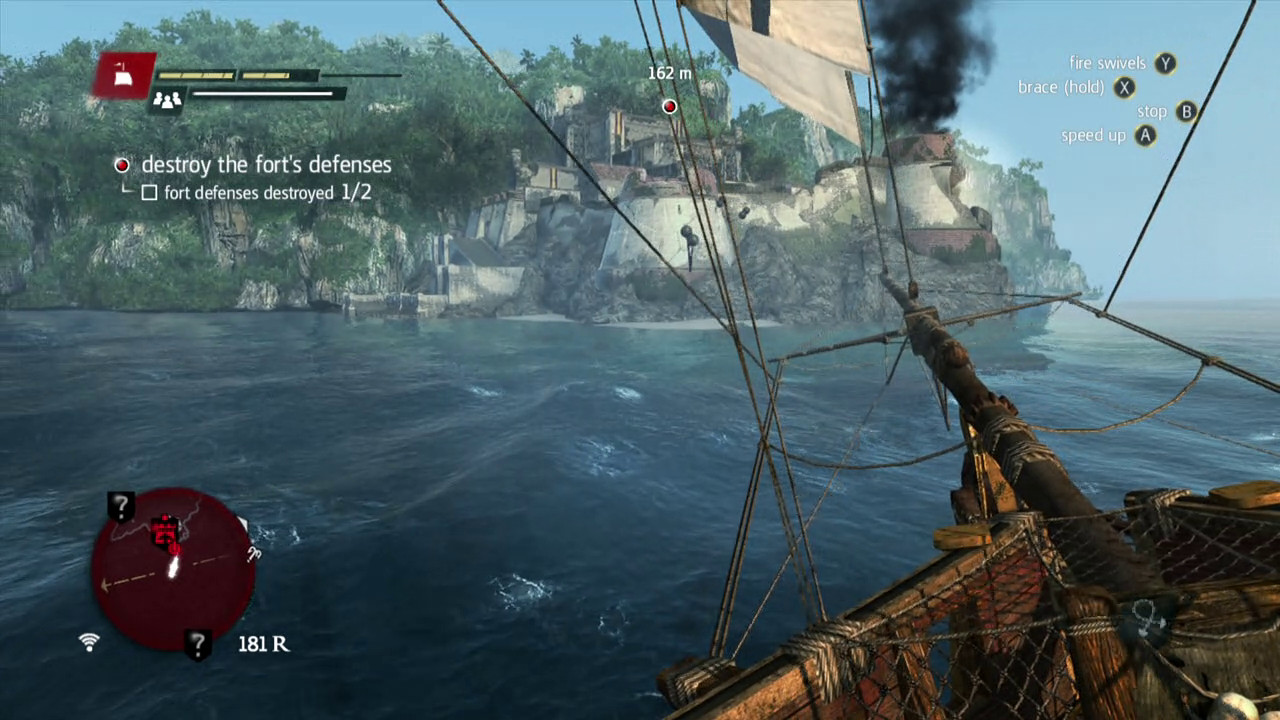
Water: The whole game is pretty good-looking, but the first time I sailed into the open sea I was left surprised by just how well-rendered and animated the water looked. In a storm, the waves tower above your boat land lash the sides of your ship, whereas when the weather is calm it’s like gliding along a lake. In the shallows, where Edward amusingly adopts a charming paddle animation, the water is crystal clear and inciting. The hard work in this area by the designers really pays off.
Your fleet: When you take over a ship, you have the option to add it to your fleet. Form your cabin, you can then manage these ships by sending them off on missions around the Atlantic, establishing trade routes.
These missions happen in the background in real-time and take between an hour to a day to complete, and completed missions reward you with goods and money. It’s a nice background activity, and there’s a certain dopamine rush when you load up the game after a couple of days to be welcomed with completed missions screen. It’s a simple mechanic, but a welcome one, and I found myself nonsensically becoming attached to my ships over time.
Larger towns: The larger towns/cities in the game have had real care poured into them in terms of design. Nassau, Havana and Kingston all have unique style and flavour, and the towering Cathedrals and forts provide that dose of Assassin’s Creed trademark parkour that we all know and love. Each town is densely populated and richly detailed, and it’s possible to spend hours getting lost, searching for treasure and undertaking the various contracts and mini-missions scattered throughout.
The Mixed
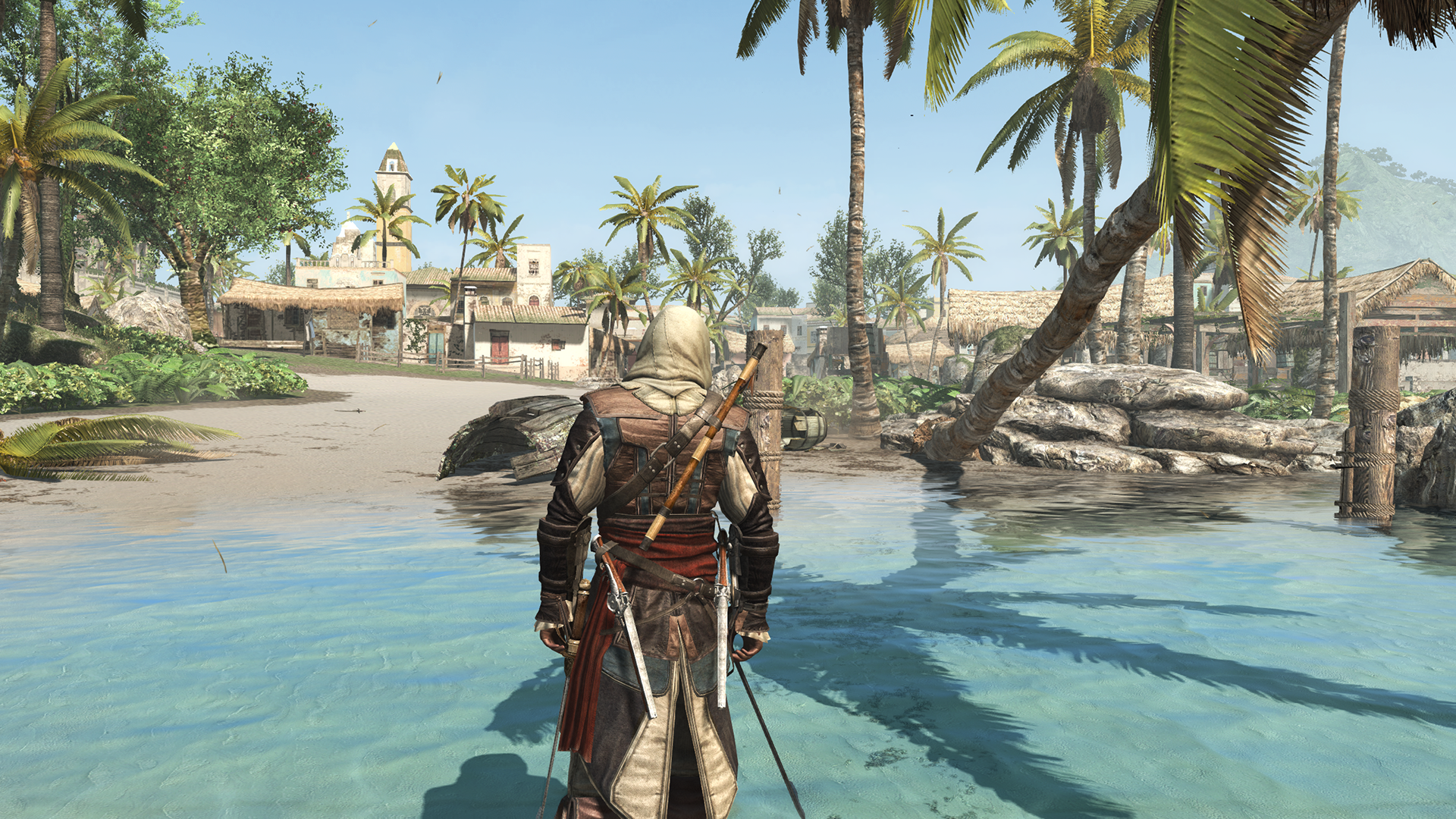
Voice acting: For the most part, the voice work in Black Flag is decent, from Blackbeard’s Bristolian twang to the cries of the Spanish sailors as you take them down. At times lines do come out clearly mis-delivered, but the biggest issue is with the protagonist himself, Edward Kenway.
Kenway is supposed to be a rebellious ruffian from England who plays by his own rules and is feared and respected amongst his fellow pirates. The voice actor, however, is a well-spoken English drama-school graduate straight out of a private education, whose delivery of the pirate-slag tough-guy lines is completely at odds with the posh voice. There’s a real jarring cognitive dissonance that comes across with most of his lines, and really serves to break the immersion. It’s a real shame.
Story: The story of Black Flag is decent enough. The Assassin’s Creed ‘assassiny’ elements are conveniently pushed into the background to almost sidequest status, which is wise, as they’re far less interesting than the pirate-y parts. It’s a long game, and your pirate buddies don’t really last long in the memory, and bar your first mate, your crew is entirely anonymous. Kennedy’s personal story does however have a decent arc, and as a whole the story isn’t that important, as it just serves to facilitate the fun adventuring.
Graphics: For a last-gen update, Black Flag does a good job, on the whole. At times it looks stunning, with beautiful water, sunsets and island flora on view as you sail the Jackdaw around the ocean. I played the Xbox One version, which has a lower resolution than its PS4 counterpart, and at times close-up textures can look a little blurry, but it’s few and far between. The ships look stunning when there’s several in a battle at once, with the smoke of the cannons often filling the screen, and the lashes of the waves churning around you all adding up to paint a wonderful looking picture.
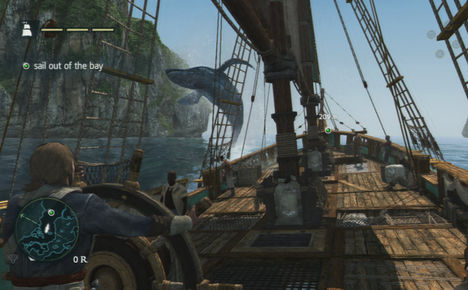
Length: Black Flag is long. It’ll take you over 50 hours to see and do most things, and the story does keep things as varied as it can, throwing you into multi-ship battles, fort invasions, stealth insurgencies, and even marooning you on an island at one point with a drunk and crazy fellow pirate.
The optional quests and collectibles however, do wear rather thin as the novelty wares off. Eventually I just couldn’t be bothered to track down the chests and ‘Animus Fragments’ (still not totally sure what they are/what they do), and the treasure maps, assassins quests, Aztec shards and wild animals are all much of the same. It doesn’t help that you’re not actually exploring and discovering these things organically yourself, but more on that shortly…
Whaling: Dotted around the ocean are encounters with sea creatures, including tiger sharks, killer whales and humpbacks, and you’re able to hop on a small boat with some buddies and harpoon them down. Mechanically it’s fine, but something about beating down an innocent mammal with harpoons and then hauling its carcass aboard feels a little tasteless and morally uneasy. This is entirely subjective of course, and appreciate it just wasn’t to my tastes.
Underwater segments: Another notch in the game’s belt of variety is the underwater sunken-wreck segments, in which you dive down into a submerges vessel and search it for treasure, aided by a ‘diving bell’, which effectively gives you a pocket of air to return to. Regardless of historical accuracy, these segments provide a welcome diversion, and visually they;re the most impressive part of the game. However the swimming mechanics aren’t the best, and each sunken ship was apparently carrying copious amounts of shark food, as every wreck is infested with what feels like unfair amounts of great whites, which only serve to pester you as you swim around, with no way to kill them. These segments would have been better without hazards, as it’s stressful enough managing your breath meter. They ultimately feel like a missed opportunity than a really valuable addition to the game.
The Bad
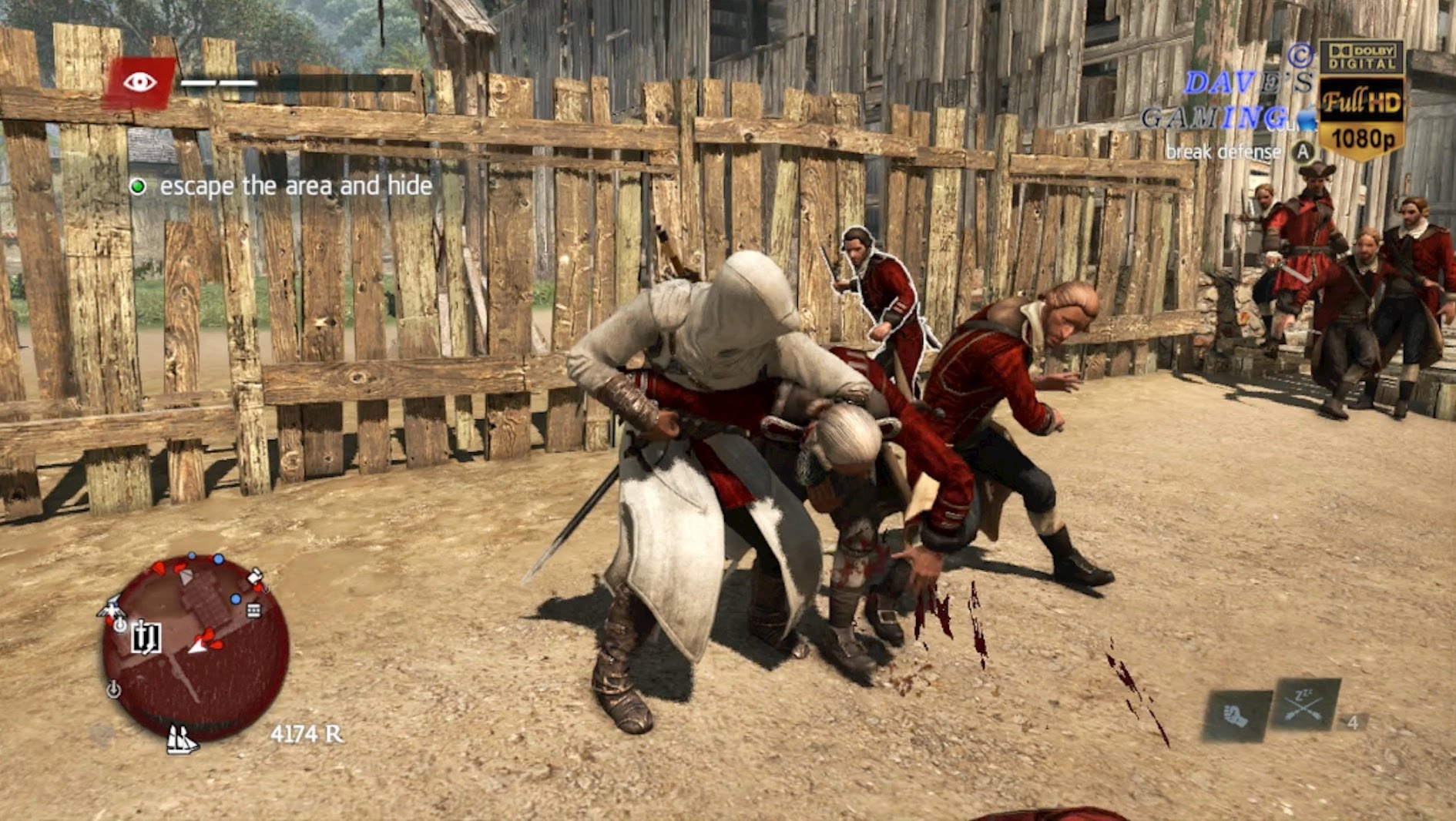
Ubisoft Map: Earlier I mentioned how the sense of discovery and wonder isn’t there when it comes to the collectibles. This for me is the game’s biggest problem, and it plagues other Ubisoft published games, particularly the AC series. Black Flag is full of huge, lush islands to explore, each meticulously and beautifully crafted aesthetically. They all have collectibles dotted all over the, whether they be chests, fragments, Aztec trinkets, shanties, treasure maps, messages in bottles – you name it. On paper, it should be fun hunting these things down as you explore the map. The problem, however, is that every single one of these items are pinpointed exactly on your mini map, and on the main map. You know exactly where each of these ‘secrets’ are located from the get-go, which diminishes any sense of discovery, and therefore satisfaction when you find them. Even worse, you end up just staring at the mini-map the whole time as you run towards an item, completely ignoring your beautiful surroundings. Worse, if there is nothing in the corner of an island on the map, you know there’s nothing worth seeing there, so you just don’t bother exploring it – even if it looks cool or unique. As the game wore on this became more and more tedious for me, and I believe is what holds this game back from being great.
Combat: Another issue with the game for me was the combat. Most of the time you’re fighting groups of soldiers, of which there are just a couple of types, and the combat control is designed to let you alternate between attacking and blocking multiple opponents. The problem is that after 40 hours of play, I’m still not totally sure how to disarm and whether pressing the ‘parry’ button will succeed or not, despite there being a seemingly generous window of opportunity to do it. I end up just spamming attack and ‘A’, which is supposed to ‘break opponents defence’, and it seems to work most of the time. There’s not much depth to it, and not much skill involved. Shooting your pistols isn’t too bad though, and the berserk dart is always a laugh, as it turns your enemies on each other.
Modern bits: As it’s an AC game, the obligatory ‘modern’ sections of course make an appearance. Of course Kenway’s adventure is technically a simulation developed using the memory of his descendant ( I think) and you play an employee of the company using it to develop a videogame (very meta). The premise is fine, but these modern parts are first person walking-simulator style, with no action and consist mainly of some very boring ‘computer hacking’ segments, as you do the bidding of a begrudged IT technician – why you do this I don’t know, with it being your first day on the job. The whole thing feels extremely shoehorned in, and just isn’t fun. Mercifully these segments are few and far between, and don’t take too long, but they’re still an unwelcome and really unnecessary addition.
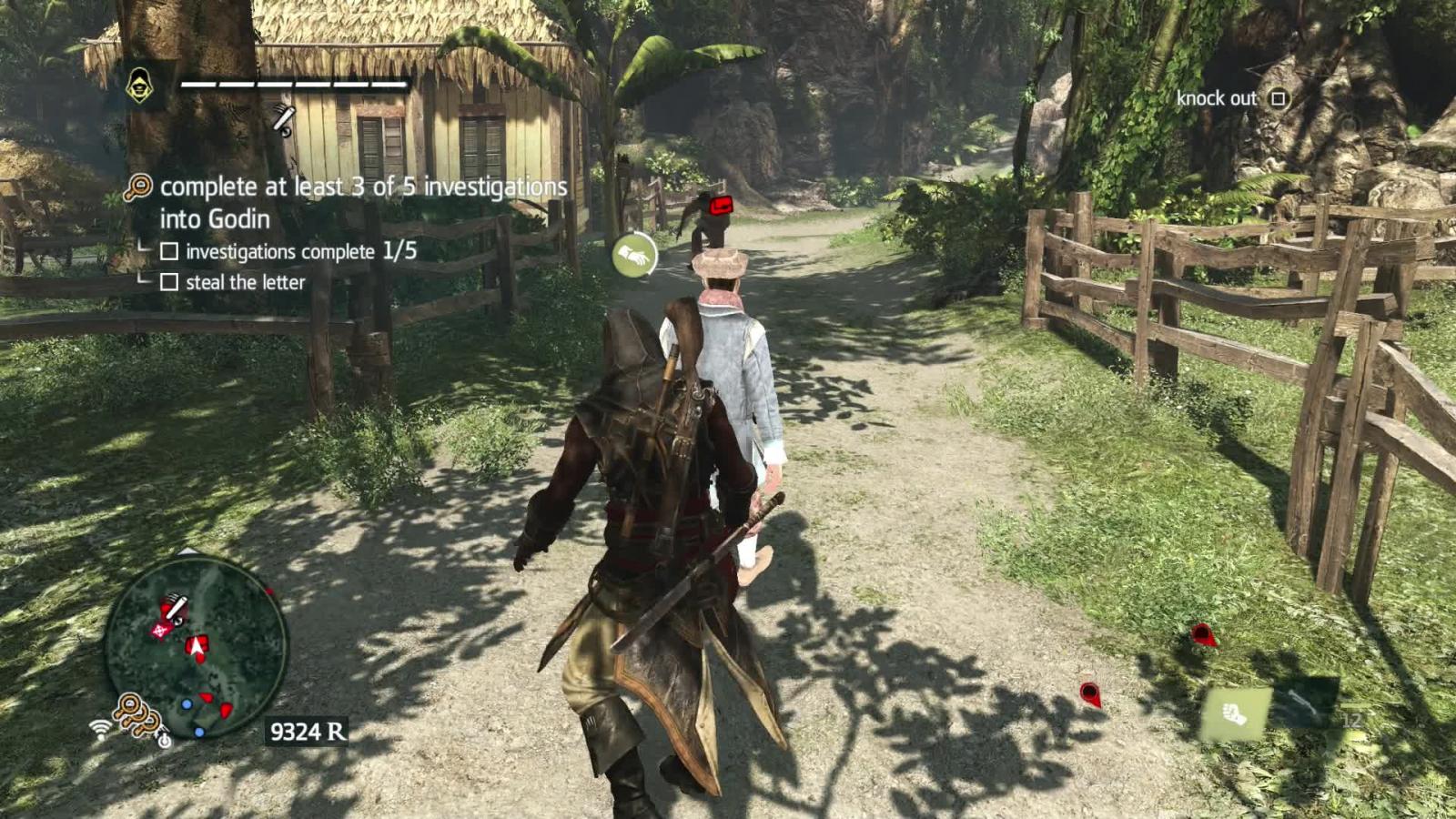
Tailing: Another AC trope makes an unwelcome appearance, and that’s the ‘tailing’ feature. Most of the missions involve tailing an adversary without being seen, which mainly consists of jumping across rooftops as you stay out of sight. The problem is that it’s very easy to get ‘seen’ by either the people you’re stalking or the guards dotted about, and when caught you’re sent all the way back to the start of the mission, forced to slog through the same dialog you’ve heard twenty times while you hide in a bush waiting for them to walk on. These types of levels are up there with escort missions as some of the most unwelcome and unenjoyable in gaming. If there was only one or two it could be forgiven, but honestly it’s every goddamn mission. Even more baffling is at the end of them you just end up killing the guy you were tailing anyway. Just get me back to my boat.
Guards: A minor thing but still a gripe, is that guards are dotted around most of the cities. However it’s never really clear whether they’re after you or not, as sometimes you can run right by them, and other times you’ll find yourself getting sniped at by a watchtower guard for no apparent reason. It’s a strange one.
Overall
After finishing Black Flag I was left wishing it had been developed as a pirate game separate form the Assassins Creed tropes, which largely serve to hold it back from greatness. And there’s definitely greatness in here – the ship battle mechanics never, ever get old, the fleet building mini-game, and the lush tropical vistas are superb. The problems that start out as niggles do build up and turn into real annoyances however, and it’s a real shame. That said, game is still worth playing for its strengths, as its shortcomings are by no means deal-breakers. It’s the best AC game I’ve played.
Score: 7/10.
Check the price of Black Flag on Amazon here yer scurvy land-lubbers.